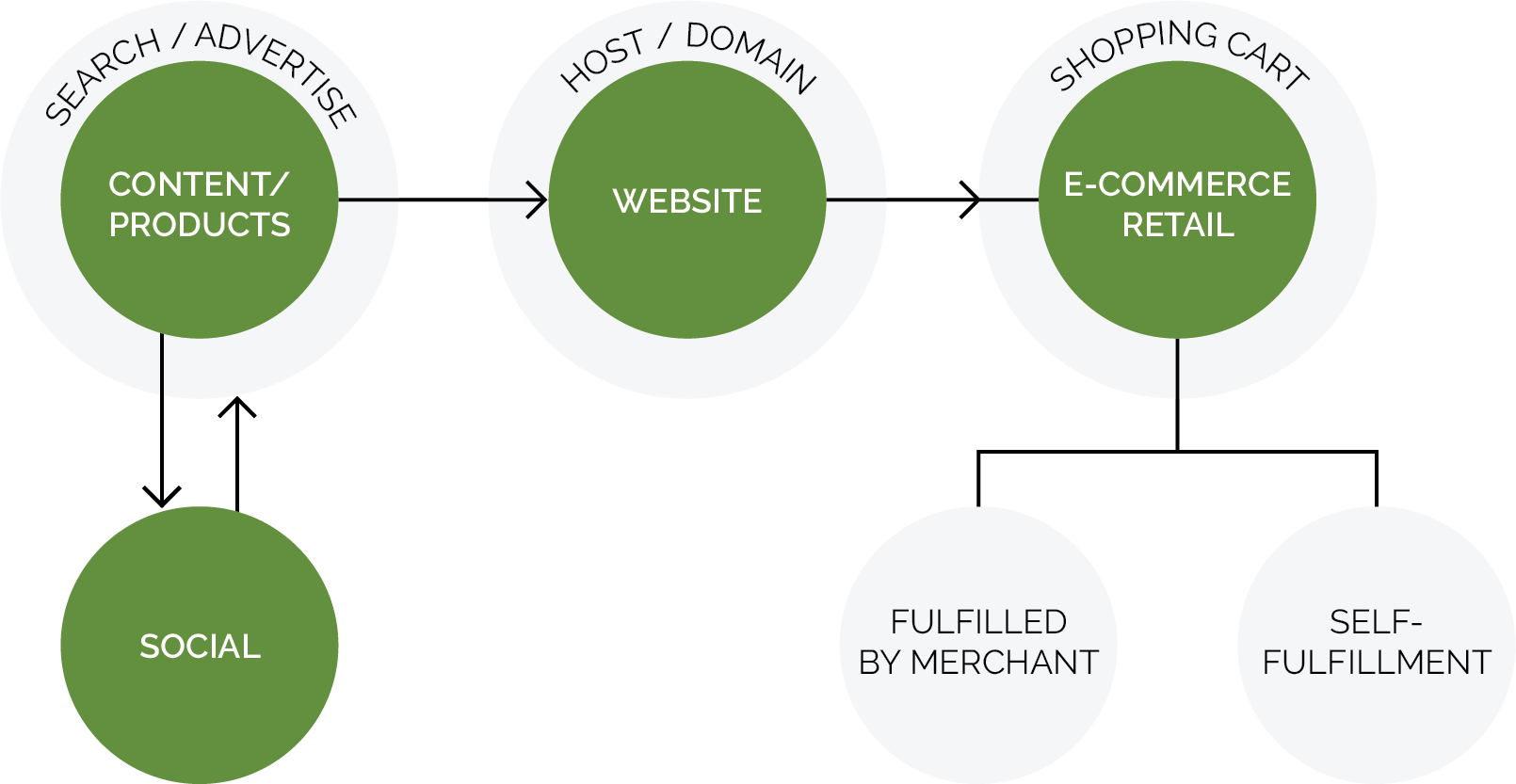2. Website
Creating Your Brand’s Online Presence
Why get your brand online?
Like other aspects of your food business, creating your brand’s online presence requires planning that can benefit from a strategic approach. Before jumping into a website builder or the latest social channel, consider your objectives for your business’ online presence.

There are a number of logical reasons to be online including:
- Telling your story. Sharing information that builds connection between your brand and consumers including the inspiration and people behind the business or a social cause supported by the business.
- Make connections and build community. Do you want to foster and maintain individual conversations with consumers? Or foster connection between your consumers?
- Providing information about your brand including product descriptions, nutrition and ingredient information, recipes or usage suggestions, where to buy and how to contact your company.
- Selling product. Whether through an online retailer, directly on your company website or other web-driven distribution models to build sales and distribution.

Making Your Website Work Harder
A company website is the most common online communication tool and it’s rare for a company not to have one. But the challenge for food companies is to make their website a marketing tool rather than just something that exists because all businesses seem to have one. Two key questions can ensure your website is an effective marketing tool.
-
What business objectives does the website need to achieve?
-
What do potential and current customers/consumers need from our website?
Considering these two questions helps develop a website that is valuable to both the company and its customers.

What business objectives does the online website need to achieve?
Websites can accomplish or support a number of business objectives. Defining how your website should impact these objectives will focus the site and the resources you use to develop content. For example, you might want your site to:

Tell a Brand Story
Tell a brand story that makes a compelling connection with the audience. This may be particularly important to social enterprises or where the inspiration behind the brand is rooted in the history of the founder or is highly relevant to the target audience.

Provide Information

Collect Information
Collect user feedback or contact information for your marketing database.

Promote
Communicate brand or product news, promotions or events.

Sell
What do potential and current customers/consumers need from our website?
While the question above is inwardly directed, thinking about what visitors to your website want from it may be even more valuable. Think about why they’re visiting the site and what information and activities are most important to them.
There are two basic concepts that guide this thinking: User Interface (UI) and User Experience (UX).
User Interface (UI)

User Interface is the way in which the user interacts with the website. This might include whether your consumers are likely to access your site on a desktop vs mobile device; or whether or not a shopping cart or search function is included front and center.
User Experience (UX)

User Experience is the sum of emotional and cognitive interactions that a consumer has with a product or service, and in this case its website. Is it visually appealing? How easy is it to use or navigate? How does it make the user feel? The following “honeycomb matrix” demonstrates many of the considerations of User Experience. Thinking about each element of your website with these considerations in mind can help improve UX.
Developing your website or e-commerce offering should be done from a UI/UE perspective. That is to say, to think through each piece of content and each step of navigation from the perspective of the consumers that will be visiting and using the site; and to ultimately create a site that maximizes the user’s enjoyment and ease of use. From a content perspective, this means organizing content in a way that consumers would logically think about it or positioning the most sought-after information first. From an e-commerce perspective, this would include how shoppers are able to review information when considering the product or minimizing the number of clicks necessary to purchase the product.
